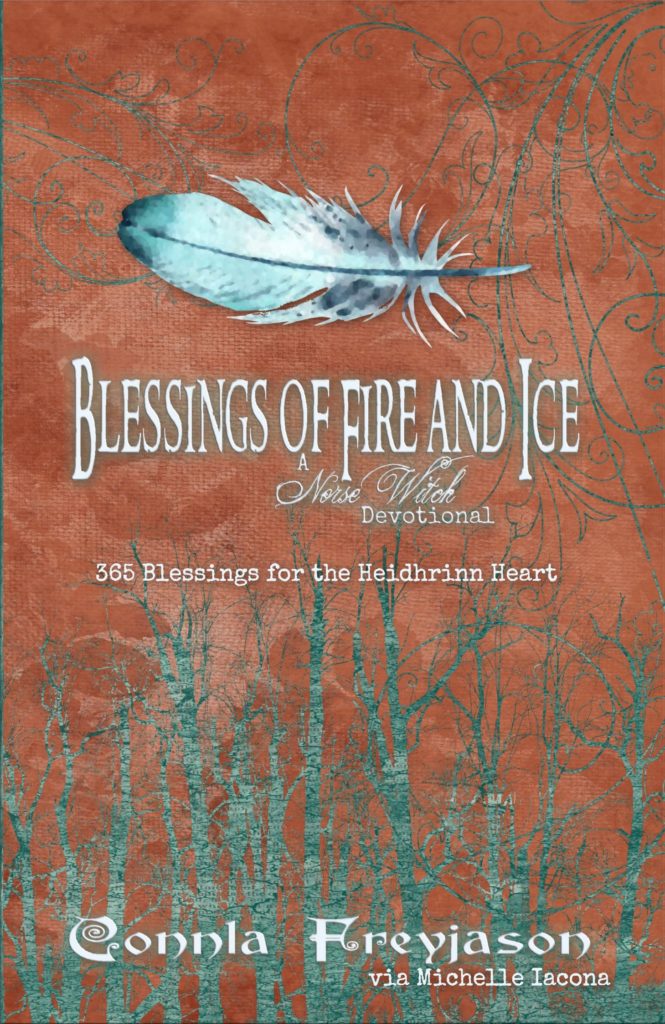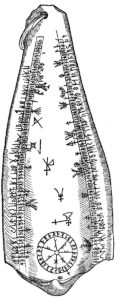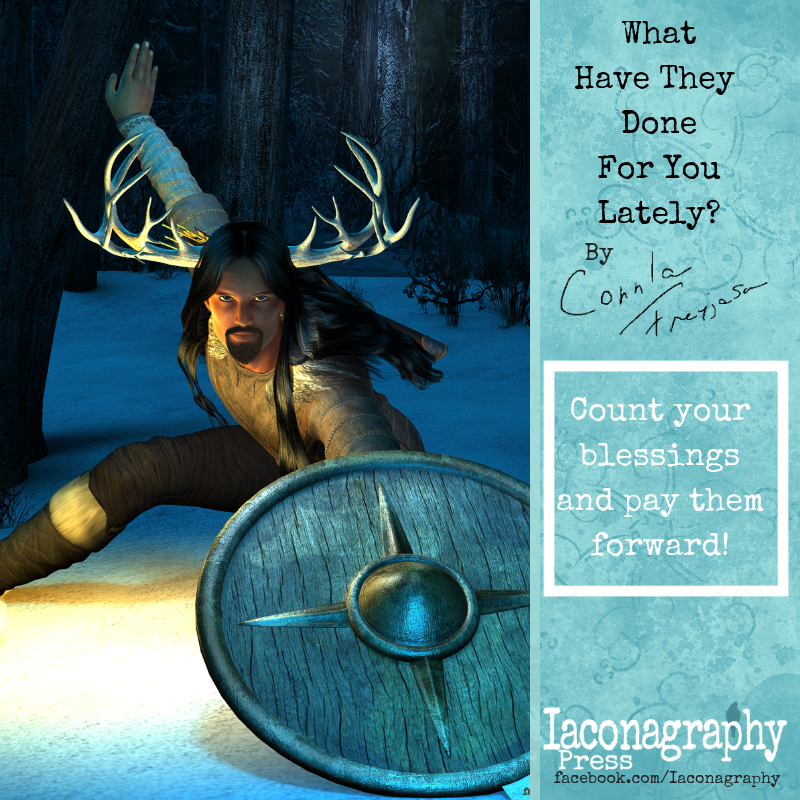Blessings of Fire and Ice: A Norse Witch Devotional

As owner and Publishing Editor of Iaconagraphy Press, I am proud to unveil the second book on our imprint: Blessings of Fire and Ice by Connla Freyjason. The second in his planned Norse Witch Series, this devotional is a tour-de-force of 365 poems–one for every single day of the year–which enchant, inform, enlighten, and invigorate personal practice. The following is Connla’s Introduction from the book. Trust me when I say that this is only the mildest “tease” of what’s in store in this volume! If you have been a fan of Connla’s votive art–most of which includes his original poetry–you are going to want to bring this volume home to cuddle and add to your devotional practice for years to come! 
When talking about any religion, one of the first things that usually comes up in conversation are that faith’s holy days of observance: holidays. Christians have Christmas and Easter, of course; Jews celebrate Hanukkah and Passover; Muslims observe Ramadan. Meanwhile, Pagans and Wiccans have their Wheel of the Year, with Samhain, Yule, Imbolc, Beltane, Midsummer, Lughnassadh, and Mabon. So what about those following a Norse Path? Like so many other things in modern Heathenry, this is a widely varied and sometimes hotly contested subject. In fact, which holidays are observed often depends on whether one is a devout Historical Reconstrustionist or not, as well as to which Kindred or major organization one belongs. Some organizations and strict Reconstructionists base their observances around their understanding of the Old Icelandic Calendar (which even the people of Iceland no longer use), while others attempt to ally their “wheel of the year” with the more traditional Pagan one, as well as with mundane-world observances, such as Memorial Day (as with the Troth).
As followers of an Old Way living in a modern world, it becomes necessary to rely on historical resources as well as good, old-fashioned common sense when creating a calendar of potential observances for the practicing Norse Witch. Most practitioners of Heidhrinnry will either already belong to an established organization (such as the Troth), will be observing the High Days with another local Pagan group that is not necessarily Norse-based (in which case, they will be observing the traditional Pagan Wheel of the Year), or will be solitary. Neither profoundly overthinking the issue, by expecting people to adopt a dead calendar, nor wholesale adopting the presently accepted Pagan calendar, while completely ignoring the historical basis of our High Days, is terribly productive. In fact, both completely sap our holidays of their spiritual significance.
This book is organized according to the Wheel of the Year as I celebrate it as a Heidhrinn Norse Witch: a Wheel of Fire and Ice which begins and ends each year at Winternights (Mabon in other Pagan traditions). Like the traditional Pagan Wheel of the Year, we likewise find the Heidhrinn Wheel of the Year divided into a Dark Half and a Light Half: one of Ice, and one of Fire. Contrary to surface appearances, this is not based on any personal attempt to hammer a Norse-based tradition into some sort of “New Age framework”, but instead on solid history. Worms runic calendar (depicted in the book Fasti Danici, published 1626) allegedly dates from 1328. Although the actual artifact has been lost to time, the drawings within that book depict a whale or porpoise bone, carved with runes representing one half of the year, beginning at the 13th or 14th of October, and ending on April 13th. We are told that the other half of the artifact contained the other half of the year, which supports an understanding of a “halved year” by our Norse Ancestors.

You will find at least one holiday within which you have never encountered elsewhere: Vanirblot. While the name of the holiday is admittedly of my own creation, its inclusion herein is based on sound archaeological research. There is definitive evidence, especially at Hulje in Sweden, that the Ancient Norse (at least some of them) celebrated a springtime holiday around the same time of year as what is called Beltane in other Pagan Traditions. Artifact evidence at that location, including the remains of horses and well-offerings of flax, strongly suggest a spring festival or feast observed to honor Freyr and Freyja. Hopefully my “adoption” of Vanirblot as a holiday based on that evidence will help to prove the point which I’ve been trying to make through everything I’ve written this far: History should ignite our modern practice, not enchain it!
As with other practices covered within my Norse Witch Series, your “mileage may vary”, as to which holidays you celebrate, and how. Because my non-solitary practice is with a non-Norse-based group (I am a General Member of the Temple of Witchcraft in Salem, New Hampshire), you will find that my construction and observance of the Heidhrinn Wheel of the Year has equal amounts in common with the typical Pagan Wheel, and with the Troth’s calendar of observances. As much as possible, I have attempted to allow the historical record (particularly the archaeological record) to inspire these choices. Ultimately, all I can do is work from my own realm of experience, and hope that it touches some small part of your experiences. Many kind and wonderful people have made the request that I compose a devotional for the practicing Norse Witch, and I have tried my utmost, with the Gods’ gracious help, to pour blessings into this book worthy of those requests.
This is, first and foremost, precisely that: a book of blessings. On a particularly grey day in April, I found myself faced with the sudden need to pick up the pieces, while my Publishing Editor fell apart. So I did what any good Norse Witch would do: I prayed, and then I pulled a rune. That rune was Ansuz:
By your Hallowed Names,
I charge this rune:
Ansuz.
Odin’s Rune;
God-Rune;
Rune of blessings spoken.
Sign of communication and inspiration;
Of Wisdom and Truth.
With your help, I advise against vanity, manipulation, and misunderstanding.
I paint you the purple of the royal Aesir;
I prove you through wise words, clear communication, inspired speech, and blessings bestowed.
I pray you: Bless.
I blot you with poetry and the blessing of others.
I send you forth as inspiration, wisdom, and blessings for myself;
Inspiration, wisdom, and blessings for those I hold dear.
Rather than basing this book on the typical “hook, book, look, took” method used by most modern devotionals (including Christian ones, which are numerous), the Gods made it very clear to me from the onset that this book was meant to be something different. They intended for it to be a ray of light in an otherwise dark world, and I solemnly pray that it will be.
A period of devotional activity may already be a part of your daily routine, and, if so, I hope this book becomes a part of that. If not, I suggest setting aside a few minutes each morning not only to spend a bit of time with this book, but also to light a candle or incense on your altar, and offer prayers to the Deity corresponding to that day of the week, as well as to your Fulltrui/Fulltrua. Don’t worry if this book arrives in your life at a time other than Winternights. I have attempted to design it so that the devotional blessings within may be picked up at whatever time of the year this book crosses your path. For those living in the Southern Hemisphere, I invite you to use your normal practice as your guide through this book.
One month and one day after having begun (as of May 19, 2018), I can honestly say that this book which you will soon hold in your hands has been precisely the blot-of-poetry which Ansuz invites. I pray it serves you likewise.


